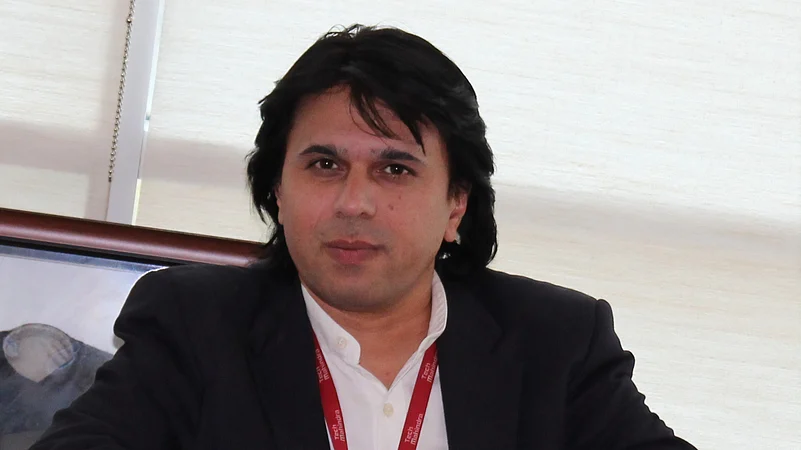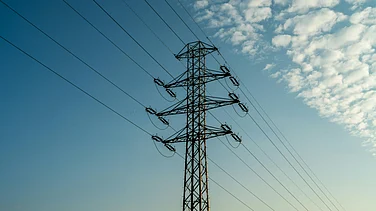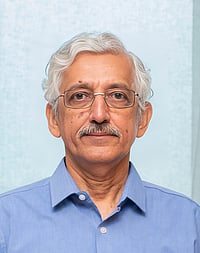Tech Mahindra, a global provider of technology consulting and digital solutions to enterprises across industries, recently announced the approval of its net zero targets by the international corporate climate action organisation, Science-Based Targets initiative (SBTi).
In an exclusive interview with Outlook Business, Sandeep Chandna, the company’s Chief Sustainability Officer talks about the company’s net zero targets and its sustainability initiatives, including emission reduction, waste management, water neutrality and employee awareness. He also talks about the acute shortage of skilled talent in the sustainability space. Edited excerpts:
There is a growing emphasis on sustainability, but what is the real and measurable impact of Tech Mahindra’s initiatives in terms of emission reduction over the years?
We started our journey around 2007–08. During the initial years, everyone was confused as sustainability standards were evolving. We got our data right during that phase. We started reporting on whatever data we could get and bringing in improvements. We were among the first few companies to start sustainability reporting.
Over time, we also began getting our data assured. Again, we were among the few companies to start integrated reporting around 2016–17. We are among the 13 companies that have their SBTi-based net zero targets approved. It was a very cohesive and lengthy exercise involving mapping data and identifying which aspects of Scope 1, Scope 2 and Scope 3 we would measure and report.
Now the targets are very clear: by 2035, we will be net zero. We are targeting 90% renewable energy by 2030.
The company’s GHG emission reduction efforts encompass Scope 1, 2, and 3 emissions across global operations, which are independently assured by a third party in accordance with ISO 14064, the Greenhouse Gas Protocol standards and BRSR Core. We have witnessed a 31% decrease in Scope 1 & 2 emissions since FY16.
All our campuses have solar farms, and in some cases, windmills. Currently, our renewable energy mix stands at about 23%, and we expect to grow that quickly. In terms of energy optimisation, we are monitoring usage and identifying areas to optimise, using IoT-based sensors, building management systems and AI to gather insights.
In addition to renewable energy and optimisation, we are looking at other aspects such as tree plantation. By 2035, not all emissions will be net zero, so we are also exploring carbon offsets.
From a circular economy perspective, we’ve set a target for all our locations to be zero waste-to-landfill certified by 2026. That means third-party verification and certification will be in place.
Regarding smart buildings, energy efficiency, cooling and investment in new technologies, we are looking at green building certifications as part of operational impact. For Scope 3, especially employee commute, we are promoting EVs and green mobility. We are encouraging associates to adopt eco-friendly travel modes like carpooling. We rely heavily on remote collaboration tools such as Teams and video conferencing to reduce Scope 3 emissions from travel, including air travel.
Can you share insights into the scale and nature of investments that Mahindra is making to enable its sustainability transition and how these are being prioritised across operations, technology and management?
All the investments we are making are either in renewable energy or energy efficiency, like improving the AC systems. The investments are comprehensive and geared towards meeting our goals in one way or another.
Tech Mahindra has committed to achieving 100% water neutrality by 2030. What specific steps are being taken to meet this target and how is the progress being tracked?
To date, over 5,930 water restrictors and sensors have been installed, resulting in about a 20% reduction in water consumption. Additionally, water sensors are being utilised to optimise water flow and usage.
We have invested in upgrading sewage treatment plants with Membrane BioReactor (MBR) technology to enhance efficiency. All our campuses have zero liquid discharge facilities. All water gets treated in the sewage treatment plants.
The company also leverages tools for water, sanitation and hygiene to improve water quality continuously. We utilise in-house tools to gain insights into current and future water risks. The tools furnish insights into water stress, floods, droughts, and future water supply, assisting in categorising locations/facilities as low and high-risk zones based on the incoming and outgoing water quantity and revenue. This enables us to assess and benchmark the water use efficiency of our sites across India and overseas, against the industry and organisational standards. We also conduct third-party audits. Facilities determine how to improve efficiency where there is wastage.
We’ve also launched the Green Marshals programme to raise awareness among employees. During FY24, this programme clocked in 667 volunteers, which contributed to 3,504 volunteering hours.
The company is targeting zero waste-to-landfill by 2026. How much of the current waste is being recycled?
In FY24, 344 MT of waste was diverted from disposal (particularly recycled), comprising 97% of the total waste generated. 24% of food waste was recycled into manure using organic waste converters and vermicomposting units. 100% of solid hazardous waste and paper waste was responsibly recycled or reused.
Given the IT sector’s growing e-waste footprint, how is Tech Mahindra addressing the end-of-life of its products and promoting circularity internally and for clients as well? Are there any measurable targets for e-waste recovery or reuse?
All the e-waste is given to third parties which are government-certified. We go and audit their locations before giving them the e-waste to see how it is being disposed of or recycled.
How do you monitor and enforce sustainability compliance across your supply chains globally or in India?
The supply chain is the biggest challenge most companies are facing. We do a capacity-building workshop with all our vendors at the start of the year, where we train them in the best practices. We involve them in the data collection process. We collect data from them on various aspects of ESG—it could be social, or also in terms of carbon footprint. What we do differently is that my team audits them. We work with those vendors to see what improvements can be made. Some of the audits are conducted virtually, while in other cases, our team conducts on-site visits to the vendors' locations.
In terms of talent, what kind of skill gaps do you witness when hiring sustainability-related professionals in this domain, and what is the company doing to tackle this problem?
Talent is a nerve which is always in pain. When you look at sustainability, this is the biggest challenge. I interviewed about 100 people and shortlisted one person. The problem is that people have not gone into depth about the whole issue. If a person guiding you doesn’t understand what they are doing, and you are setting targets on the basis of that, you can imagine the kind of gaps that will come into place. Sustainability education in India started only in 2017–18. So, the number of people graduating from these courses is minimal.
At Tech Mahindra, I conduct green IT training. We have internally built green IT certification tools that help employees understand what exactly ESG means. My team also works with the training departments to ensure that new inductions are aware of what ESG is and what Tech Mahindra is doing in terms of sustainability.
ESG is an evolving domain that requires specialised skills and a deep understanding of its dynamic landscape. As the demand for ESG expertise continues to grow, the need for focused training and awareness becomes even more critical.
A recent job post I shared on LinkedIn highlighted this gap vividly—the overwhelming response reflected high interest, but also revealed a noticeable disconnect between industry expectations and available talent. Bridging this gap requires concerted efforts in providing structured training, practical exposure, and upskilling opportunities. At Tech Mahindra, we are committed to nurturing this talent pipeline and equipping professionals with the capabilities needed to drive meaningful ESG outcomes.
One and a half years ago, we launched our own ESG consulting offerings, for which I am hiring people. I am also helping customers use the right solutions and technologies to help them meet their targets, for data monitoring, energy management, smart buildings, and cities. The third is reporting, where we are building the skill sets.
We also built various platforms, including i.riskman, which looks at climate-related risks; i.system, which handles ESG data collation, reporting and trends in the data. Very soon, we will launch i.GreenFinance, where we are looking at green loans and borrowings. In addition to this, we have launched a green code refiner specifically for technology and coding companies. You give this platform a code, and it will provide you with a new code which is about 30–40% more energy efficient. So, for that, the skill set requirement is much bigger than in regular companies.
Where does the IT industry fall short when it comes to voluntary sustainability action, and do you believe stricter regulations are necessary to drive real and meaningful impact across the sector?
Scope 1 and Scope 2 are easy. When you start working on Scope 3, you face challenges in terms of what targets to reach—for example, employee commute. If I have 150,000 employees, I have to report their emissions and travel. So, it becomes difficult.
As of now, there aren’t significant challenges for the IT industry compared to manufacturing. But yes, challenges exist. For example, with renewable energy, there are still some states where open access is a challenge. Even when you want to buy renewable energy, the processes are complex. These challenges will continue to exist in manufacturing, industrial, or powerhouses, but from a technology perspective, we are still better off compared to other sectors.
Looking ahead, are you planning any new technology partnerships or a pilot programme that would set a benchmark for the industry?
Yes, of course. We would be using AI and GenAI in a lot of our tools to help our customers meet their net zero targets in one form or another.



























